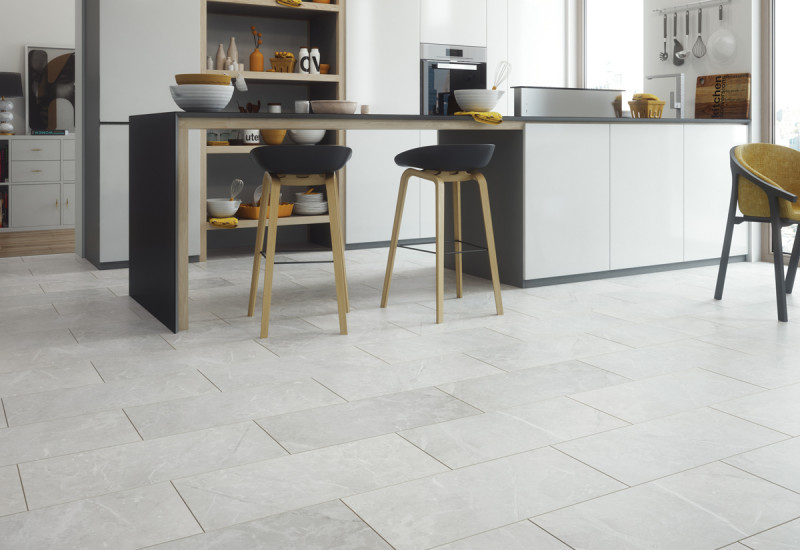GUIDE
Which flooring abrasion class will be best for the kitchen?
Ceramin

The abrasion class is one of the properties you should pay special attention to when choosing the flooring. It is established according to the European standard EN13329, which determines the durability of the flooring and how quickly its surface will wear. It is indicated by the symbol AC with an additional number. Find out what each one means!
It may happen that the flooring will have the symbol AC6 and AC7, and in newer models even AC8, which means an extremely high abrasion class.
In order to choose the flooring for the kitchen correctly, it is worth knowing what the floor in a particular room is likely to be exposed to. It should be able to cope with problems such as:
Therefore, the higher the abrasion class of the floor, the better it will withstand all the actions mentioned above. The top layer, usually covered with laminate, is responsible for protecting the floor from damage.
Recently, the flooring has been often chosen for domestic and residential spaces due to its easy installation, lower price and attractive appearance. The aesthetic qualities are not significantly different from classic boards or parquet. More importantly, it is extremely durable and resistant to many external factors. Currently, the market offer is extremely rich, which allows for the selection of designs and colours that will be a perfect complement to modern interiors. However, it is important to remember that the quality of the flooring varies depending on the model and the abrasion class. Explore our suggestions to make your kitchen decor not only aesthetically pleasing, but also practical and resistant to external factors.
The kitchen is a specific place exposed to high temperatures. It’s not hard for grease from the frying pan to splash onto the floor, so it’s a good idea to choose the right flooring for it that are stain-resistant. Laminate flooring should be resistant to heat and hot grease, so you can easily remove dirt from the floor. Laminates of the highest quality will also not fade when exposed to sunlight. In addition, the kitchen floor is exposed to moisture due to constant contact with water. Water-resistant flooring is therefore the best solution to keep your kitchen floor intact for a long time.
Vinyl flooring is a great way to get an inexpensive and durable floor. It has been coated with a layer of vinyl, which makes the flooring resistant to moisture. This type of flooring will also work well in the bathroom and other rooms exposed to moisture. The kitchen is a very heavily used room, so the floor should be durable and abrasion-resistant. When choosing the best flooring for the kitchen, it is worth paying particular attention to its abrasion class. One of the biggest advantages of vinyl flooring is its resistance to mechanical damage. In addition, they can withstand the fall of heavy objects, or the various types of stains and dirt that can appear in the kitchen.
Our proposal, not necessarily intended for kitchens, but distinguished by its high abrasion resistance class, is the composite flooring. It is characterised by easy installation and is most commonly used in gardens and on terraces. In addition, it has a longer lifespan and higher load resistance.
The abrasion class of the kitchen flooring determines not only its price, but mainly the comfort of long-term use of the floor and its protection against wear. It is worth choosing the flooring from European manufacturers that has a guarantee of compliance with European standards, and the information that is placed on packages with the flooring is factually correct.
It is worth knowing that the hardness of the flooring and its abrasion resistance are very similar parameters. Indications of how hard the surface of the floor is can be translated into how hard the material it is made of is. In this area, we take into account the same indications, but in order to combine a durable and hard flooring, it is worth considering other characteristics as well. For this purpose, it’s a good idea to check what kind of guarantee the flooring has, as its hardness increases with the length of this period. If you decide on wood, pay particular attention to the material the flooring is made of. Exotic wood is usually distinguished by the highest hardness class. When it comes to the European species, maple, sycamore and pear will be perfect. Interestingly, popular coniferous trees are softer and thus have a lower abrasion class than deciduous trees.